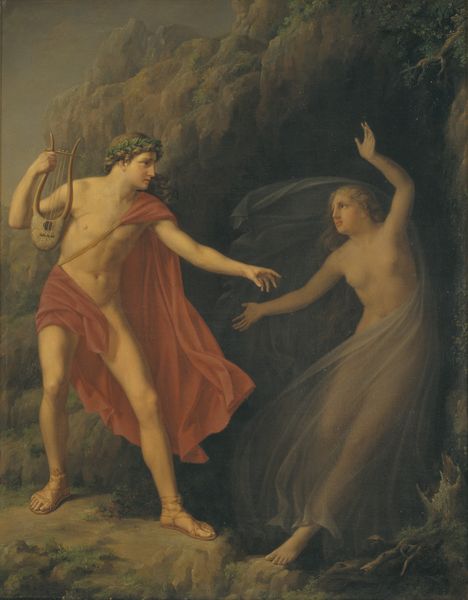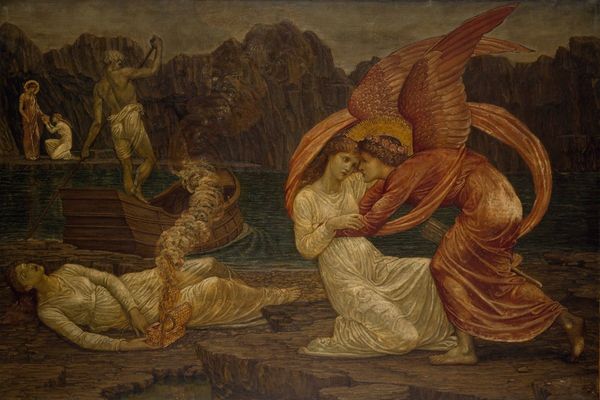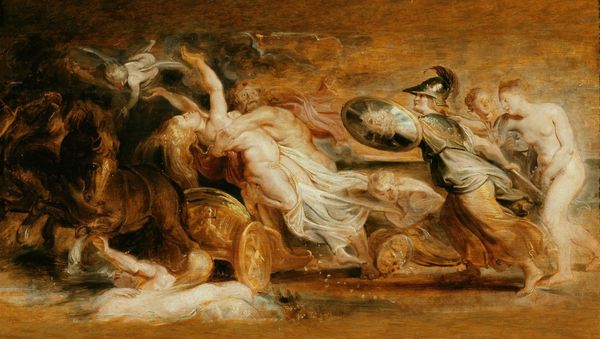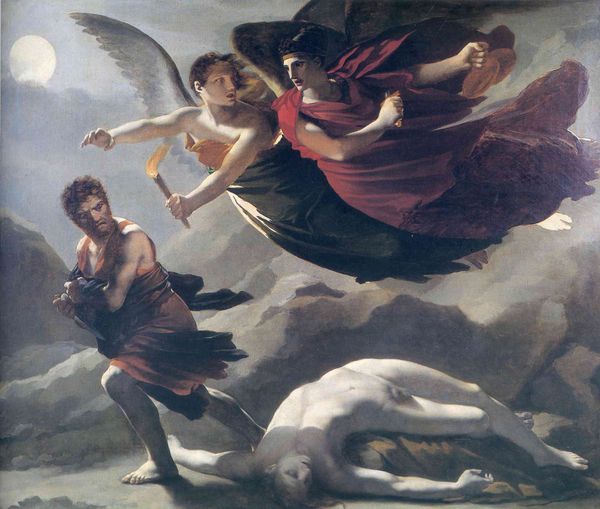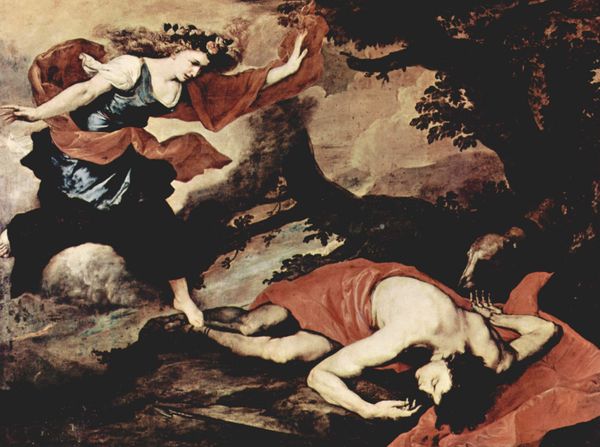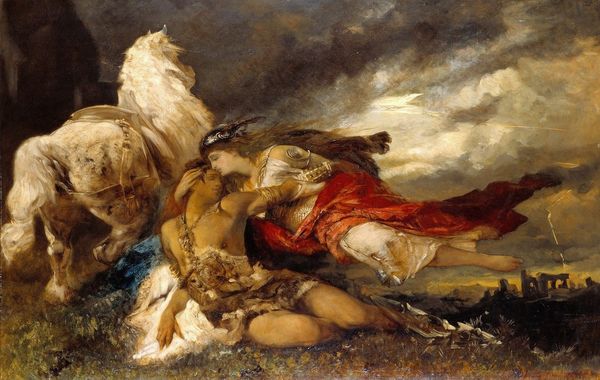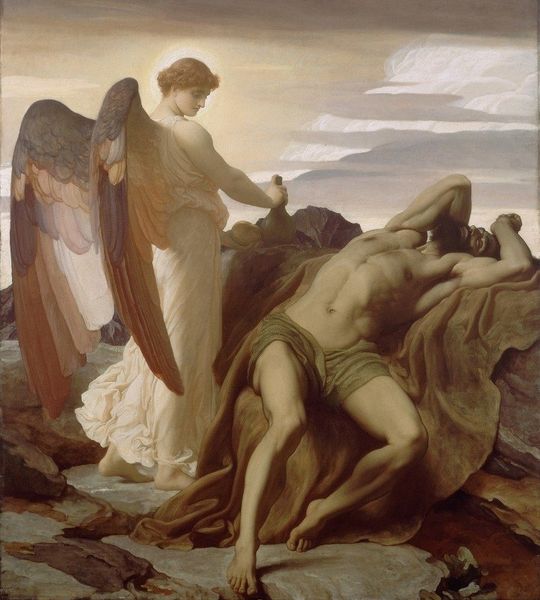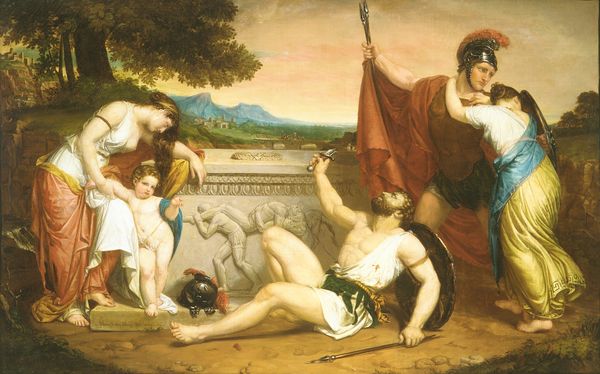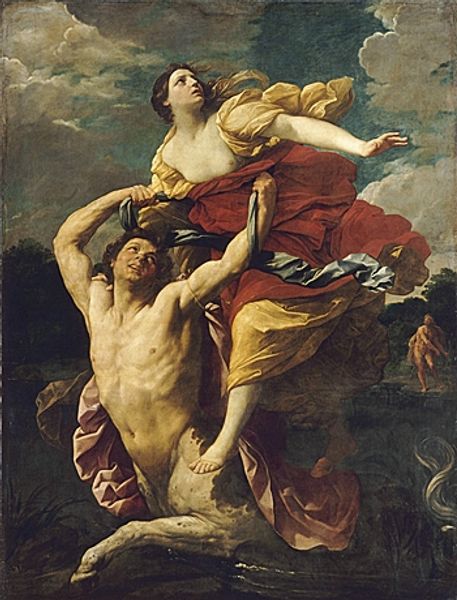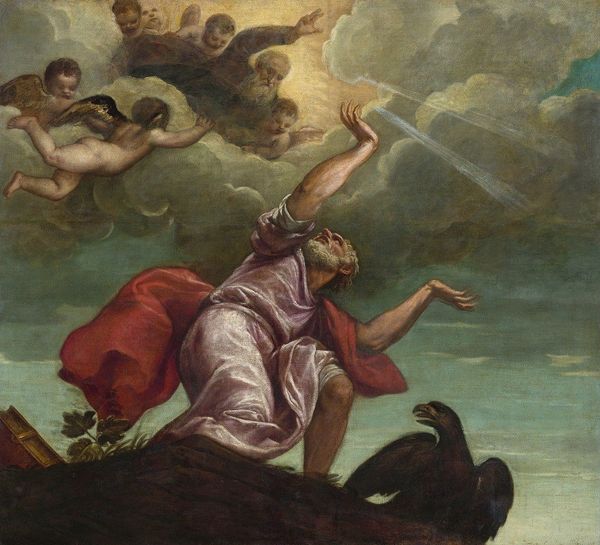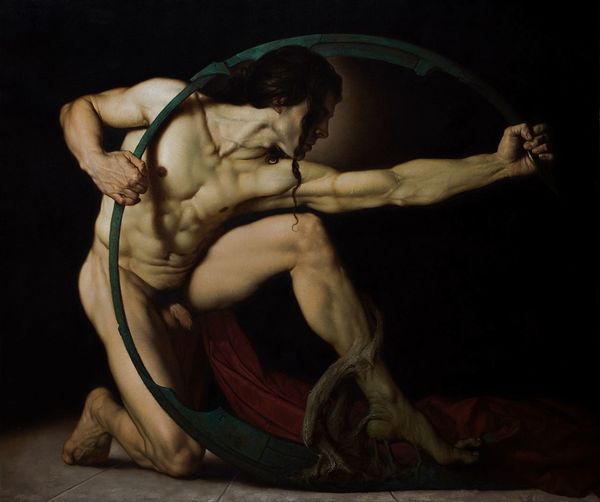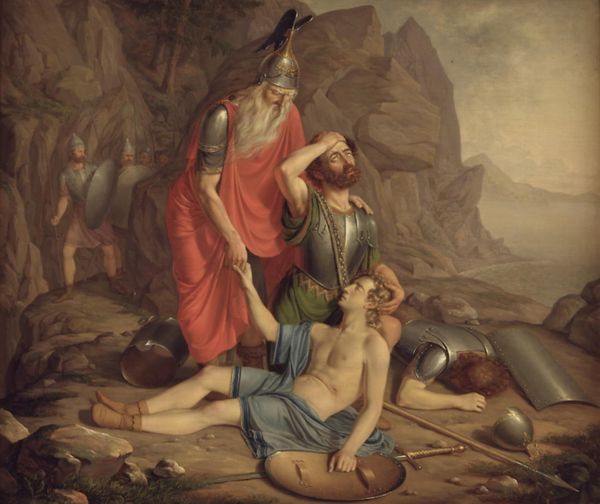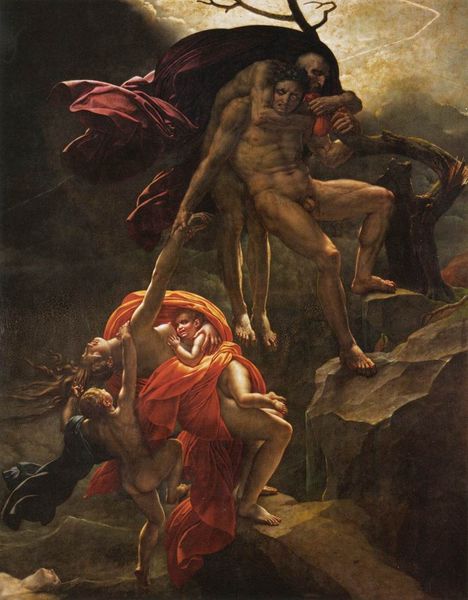
Copyright: Public Domain: Artvee
Curator: Edward John Poynter painted "Orpheus and Eurydice" in 1862 using oil on canvas. It’s quite the theatrical representation of a well-known myth. What catches your eye first? Editor: Definitely the tension, that pull. Eurydice practically bursting out of the underworld, yanking Orpheus along, with that sky feeling oppressive overhead. You know what’s funny? For a story so laden with grief, it almost looks like they're fleeing a particularly dull dinner party! Curator: Interesting take! Poynter captures a specific moment of hope and simultaneous heartbreaking loss from the Greek myth. Orpheus, having charmed Hades with his music, is permitted to lead his dead wife Eurydice out of the underworld, on the condition that he does not look back at her until they both reach the upper world. Editor: And of course, he fails! That one fatal glance. It makes you wonder about the unbearable weight of doubt and the fragility of promises. And, beyond the story, there’s such artful use of symbolism – the snake, for instance, lurking right in the foreground like a coiled threat, a prelude to tragedy. Curator: Yes, and Poynter was deeply involved in the Aesthetic Movement later in his career and became a champion for academic art. It's easy to see those classical influences here – look at the composition, the idealized figures, even that carefully rendered rocky landscape with distant cloudscape is reminiscent of other contemporary romantic landscapes. Though the myth is ancient, depictions of it remained relevant throughout the nineteenth century because the narrative addressed ongoing human anxieties about mortality. Editor: It almost feels like Victorian audiences might have taken away from it some sort of cautionary message regarding obedience and the fear of transgressing social boundaries... Also, just the idea that you might snatch something, or someone, away from hell. How wonderfully transgressive and rebellious. Curator: It’s interesting to consider these intertwined elements within this image, myth, artistic style, and period context. Hopefully, it inspires reflection on the multifaceted nature of how we construct history, memory, and emotion. Editor: Definitely. For me, the piece now strikes me less as an illustration of a story, but as a visual meditation on anxiety, desire, and those moments where a single choice alters everything.
Comments
No comments
Be the first to comment and join the conversation on the ultimate creative platform.
